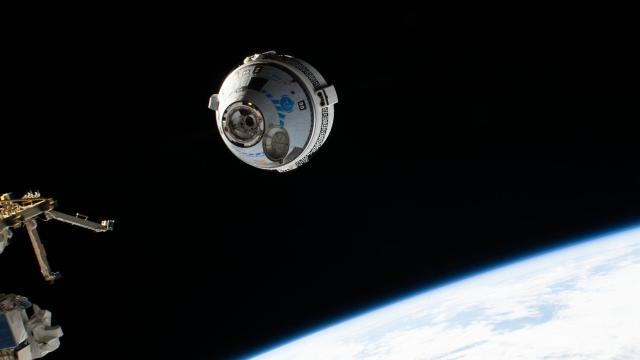The first operational mission of Boeing’s Starliner CST-100 spacecraft to the International Space Station won’t happen until 2024 at the earliest, according to NASA’s updated flight manifest. The capsule, designed to carry crews to low Earth orbit, was originally supposed to fly in 2017 but has faced a series of delays.
The first crewed test flight of Starliner will happen in April 2023 and not in February as planned, NASA announced late last week. The reason, says the space agency, is to avoid a scheduling conflict with the SpaceX Crew-6 mission to the ISS, which is planned for mid-February. “NASA and Boeing are currently working together to achieve flight readiness,” the space agency said. NASA astronauts Sunita Williams and Barry Wilmore have been assigned to the Boeing Crewed Flight Test (CFT).
NASA also took the move of rescheduling the SpaceX Crew-7 mission, which will now launch in late 2023 as opposed to early 2024. This schedule-juggling means no operational flights for Starliner are planned for the coming year and that the spacecraft, assuming it gets certified in 2023, won’t fly its first bona fide mission until 2024 at the earliest.
In May, the second uncrewed flight test of Starliner, OFT-2, went reasonably well, but the mission to the ISS exposed some issues that Boeing and NASA are currently working to resolve. “The joint team continues to close out the OFT-2 anomalies and partner closely together to identify forward work and ensure all requirements for crewed flight are met,” NASA said, adding that the team is “working on a variety of verification efforts across several critical systems that will be used for Starliner’s crew flight certification.”
Opaque and vague, as is typical of NASA in its public statements about private partners. Phil McAlister, director of commercial spaceflight at NASA, provided more details during an October 31 meeting of the NASA Advisory Council’s Human Exploration and Operations Committee, SpaceNews reported. “There were several in-flight anomalies that we had to assess” from OFT-2, he said. “Some of that is still ongoing. That work has to be completed and closed out before the CFT flight.” In addition to thruster problems that are “pretty well understood and in hand,” the team is working on parachutes and software. McAlister said he “wouldn’t characterise anything as major.”
Depending on how the CFT mission unfolds, Starliner could finally get certified next year, followed by regular crew rotation missions to the ISS. But as the rescheduling of the Crew-7 mission shows, NASA’s not making any assumptions about the spacecraft’s pending availability — and for good reason. The Boeing commercial crew project has been beset with difficulties, highlighted by a flubbed first flight test in 2019 and a scrubbed launch attempt in 2020, in which corrosion caused the capsule’s valves to get stuck.
NASA has had to lean harder on its other commercial crew partner, SpaceX, as a result. The Elon Musk-led company, using its Crew Dragon spacecraft, has been launching astronauts to the ISS since November 2020. The point of choosing two vendors was to create some redundancy, but that’s yet to happen. “While it is fortunate that the U.S. has one operating ISS crew launch provider, we need to continue to express our serious concern with the impact of the ongoing delays of the CST-100 program on the commercial crew program,” said Mark Sirangelo, a member of the October 31 panel and a scholar in residence for space, aerospace and engineering at University of Colorado, as reported in SpaceNews.
NASA, unwilling and unable to wait for Starliner, recently booked a bunch of crewed launches with SpaceX, namely Crew-7 through to Crew-14. With these newly added missions, NASA has secured access to the ISS up until 2030, after which time the orbital lab is expected to be retired. Starliner, by contrast, is booked for just six flights.
NASA awarded Boeing the $US4.2 ($6) billion commercial crew contract in 2014. In October, Boeing announced that it’s taking a $US190 ($264) million hit on Starliner, raising the company’s total loss on the program to $US883 ($1,226) million. Adding insult to injury, Boeing slipped behind SpaceX on NASA’s roster of private partners during fiscal year 2022.
More: NASA’s Megarocket Rolls Back to Launch Pad, With Blastoff Just 10 Days Away
